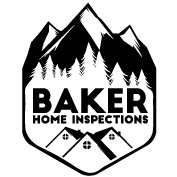Legionnaires’ Disease at 120 degrees
On August 25th, 2017 patients at a local hospital were told to drink only bottled water and not to use the shower or sink. This might sound like something that could have happened on a Caribbean cruise gone wrong, but it was occurring where most consider to be one of the most sanitary places. The local television news in Seattle ran a story later that night about the latest outbreak of Legionnaire’s Disease being detected and responsible for one death at that time. This was happening less than one year from a previous outbreak which claimed two lives.
What is Legionnaires’ Disease?
Legionnaires’ Disease is a form of pneumonia named after an outbreak in 1976 at an American Legion convention in Philadelphia. Legionnaires’ Disease has a milder version known as Pontiac Fever. Both diseases are known as “legionellosis.” According to the CDC website, people may develop legionellosis when they breathe in water mists or vapors contaminated with a bacteria. The bacteria may then infect the lungs, although most people exposed do not get sick. The more vulnerable groups are individuals who are 50 and older, smokers, people with chronic lung disease and individuals with weakened immune systems. Legionellosis cannot spread from one individual to another. About 6,000 cases of Legionnaires’ disease were reported in the United States in 2015. However, because Legionnaires’ disease is likely underdiagnosed, this number may underestimate the true incidence. About ten percent of people who get sick from Legionnaires’ disease die.
What causes Legionnaires’ Disease?
Legionellosis is caused by the bacteria known as Legionella; it thrives in water temperatures between 77-130°F. Water temperatures at 140°F and higher have a bactericidal effect. The Water Quality and Health Counsel declared Legionella “Public Health Enemy #1 in US Water Systems”. The World Health Organization recommends water be stored at 140°F to stop the spread of the bacteria. Domestic water heaters, particularly electric devices, can certainly be contaminated by Legionella. In Quebec, a study in 1991 of 211 homes (178 electric water heaters, 33 oil or gas water heaters) found Legionella contamination in 40% of electric water heaters.
How you can heat and store water at 140°F and keep your family safe.
A water temperature of 120°F (the temperature recommended by most manufacturers) can scald skin in 5 minutes while exposure to 140°F water can scald skin in only 5 seconds. So how do you keep your family safe from those extreme temperatures? Here are 3 solutions you can have installed in your plumbing system to ensure the safety and health of your family.
1. Temperature Activated Mixing Valve: A device installed at or near the outlet of the water heater appliance that automatically tempers the hot water to a preset temperature that is safe for human contact before it reaches the point of use, regardless of the water heater thermostat setting.
2. Automatic Compensating Mixing Valve: A device installed at the shower or tub that
automatically blends the hot water supply with sufficient cold water to deliver water
temperature to the shower head or tub spigot that is safe for human contact, regardless of the
positions of the manual valve settings.
3. Temperature Limiting Device: A device installed at lavatories, sinks, bathtubs, etc. that prevents the water temperature from exceeding a preset temperature.
These items should only be installed by a plumbing professional.
Ontario Building Code (and other provinces) have required these devices be installed on all new homes
and remodels since 2004.
So why would a home inspector be talking about Legionellosis?
As per the Washington State Standards of Practice, home inspectors are required to suggest the temperature be brought to a maximum of 120°F. Most people think this means to turn down the thermostat on the water heater, which can potentially be a health risk. The International Plumbing Code states: “Shower and tub-shower combination valves required by this section shall be equipped with a means to limit the maximum setting of the valve to 120°F, which shall be field adjusted in accordance with the manufacturer’s instructions.”. This makes no mention of stored water temperatures and this is where there seems to be a misinterpretation.
This to inform my clients and the public about the potential risks involved with water
temperature safety and their health.
Jordan Baker
Baker Home Inspections
License # 1785
www.bakerhomeinspections-wa.com
References:
https://www.phcppros.com/articles/1828-hot-water-system-temperatures-and-the-code
https://www.ncbi.nlm.nih.gov/pmc/articles/PMC2094925/
https://www.cdc.gov/legionella/fastfacts.html
https://up.codes/viewer/georgia/ipc-2012/chapter/4/fixtures-faucets-and-fixture-fittings#4
http://waterandhealth.org/safe-drinking-water/addressing-legionella-public-health-enemy-1-watersystems/
